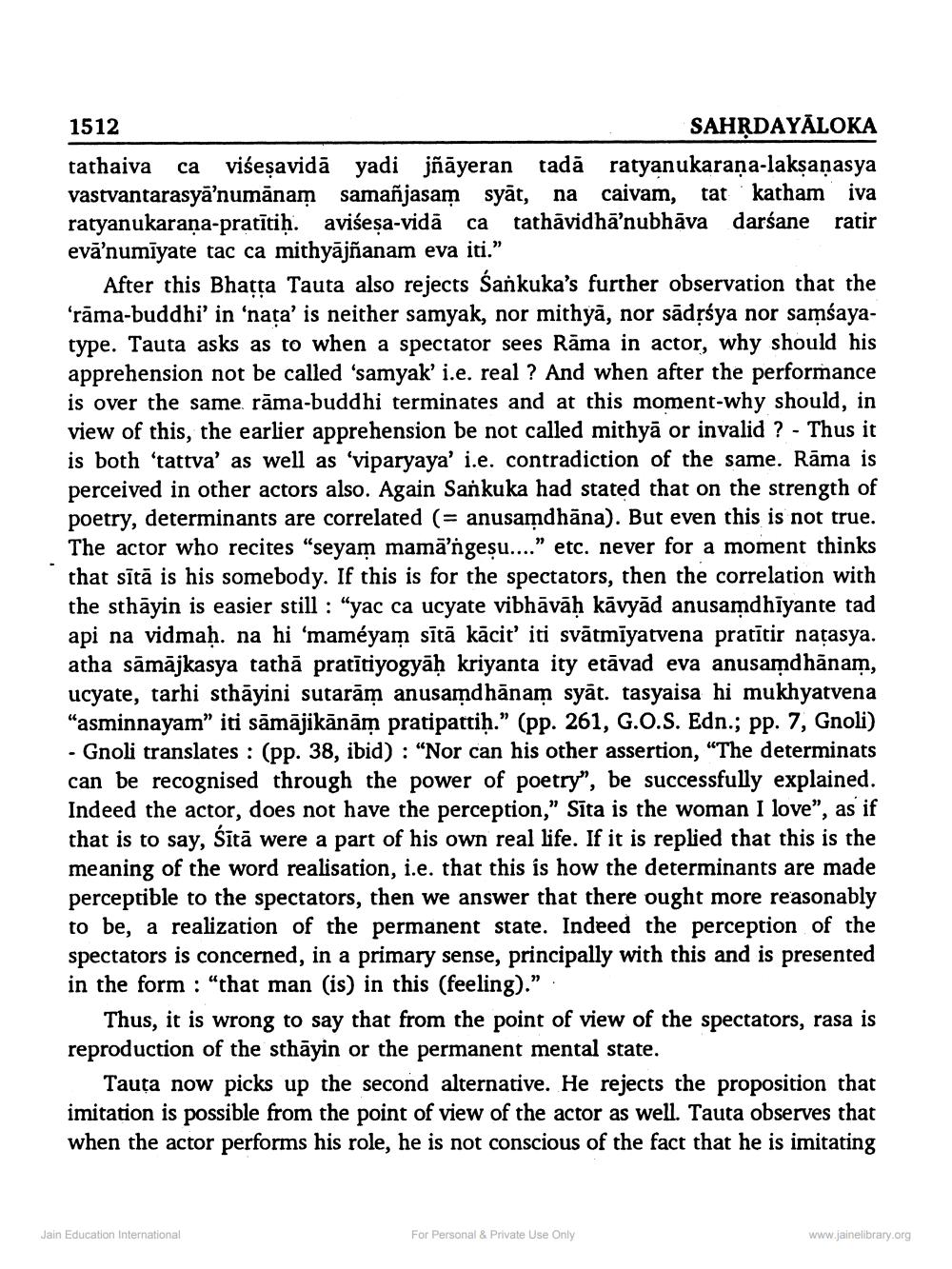________________
1512
SAHRDAYĀLOKA tathaiva ca višesavidā yadi jñāyeran tada ratyanukarana-laksanasya vastvantarasyā'numānam samañjasam syāt, na caivam, tat katham iva ratyanukarana-pratītih. avisesa-vidā ca tathāvidhā'nubhāva darśane ratir evā’numīyate tac ca mithyājñanam eva iti."
After this Bhatta Tauta also rejects Sankuka's further observation that the ‘rāma-buddhi' in 'nata’ is neither samyak, nor mithyā, nor sādịśya nor samsayatype. Tauta asks as to when a spectator sees Rāma in actor, why should his apprehension not be called 'samyak'i.e. real ? And when after the is over the same, rāma-buddhi terminates and at this moment-why should, in view of this, the earlier apprehension be not called mithyā or invalid ? - Thus it is both 'tattva' as well as 'viparyaya' i.e. contradiction of the same. Rāma is perceived in other actors also. Again Sankuka had stated that on the strength of poetry, determinants are correlated (= anusamdhāna). But even this is not true. The actor who recites "seyam mama'ngesu...." etc. never for a moment thinks that sītā is his somebody. If this is for the spectators, then the correlation with the sthāyin is easier still : "yac ca ucyate vibhāvāh kāvyād anusamdhiyante tad api na vidmah. na hi ‘maméyam sītā kācit' iti svātmiyatvena pratītir națasya. atha sāmājkasya tathā pratītiyogyāḥ kriyanta ity etāvad eva anusamdhānam, ucyate, tarhi sthāyini sutarām anusamdhānam syāt. tasyaisa hi mukhyatvena "asminnayam” iti sāmājikānām pratipattiḥ.” (pp. 261, G.O.S. Edn.; pp. 7, Gnoli) - Gnoli translates : (pp. 38, ibid) : "Nor can his other assertion, “The determinats can be recognised through the power of poetry", be successfully explained. Indeed the actor, does not have the perception," Sīta is the woman I love", as if that is to say, Śītā were a part of his own real life. If it is replied that this is the meaning of the word realisation, i.e. that this is how the determinants are made perceptible to the spectators, then we answer that there ought more reasonably to be, a realization of the permanent state. Indeed the perception of the spectators is concerned, in a primary sense, principally with this and is presented in the form : "that man (is) in this (feeling).”.
Thus, it is wrong to say that from the point of view of the spectators, rasa is reproduction of the sthāyin or the permanent mental state.
Tauta now picks up the second alternative. He rejects the proposition that imitation is possible from the point of view of the actor as well. Tauta observes that when the actor performs his role, he is not conscious of the fact that he is imitating
Jain Education International
For Personal & Private Use Only
www.jainelibrary.org




